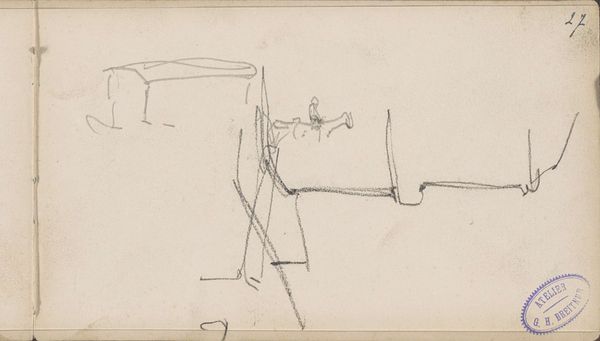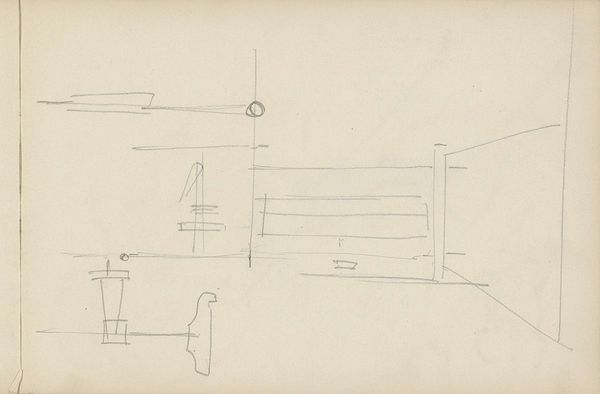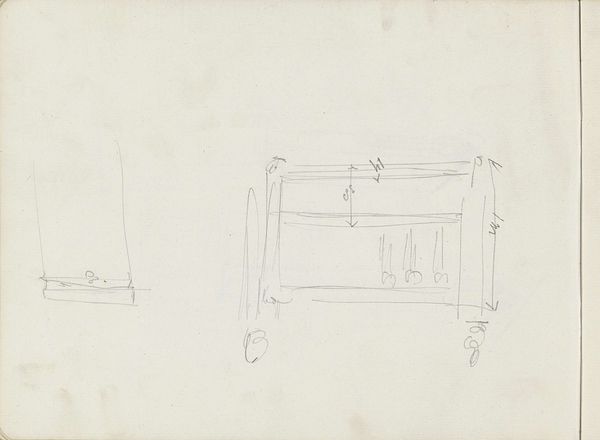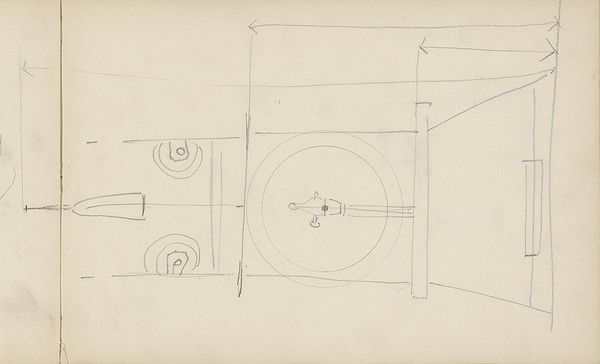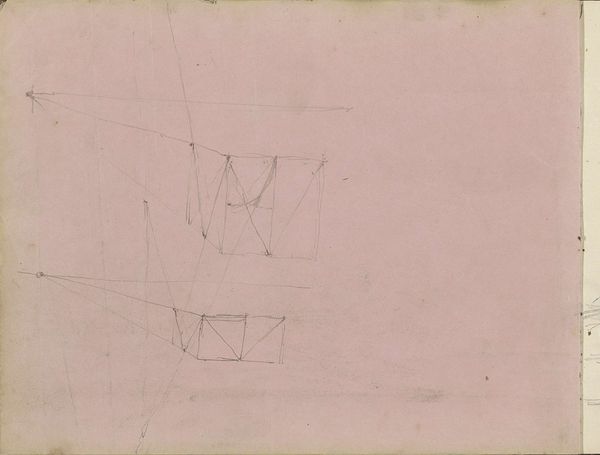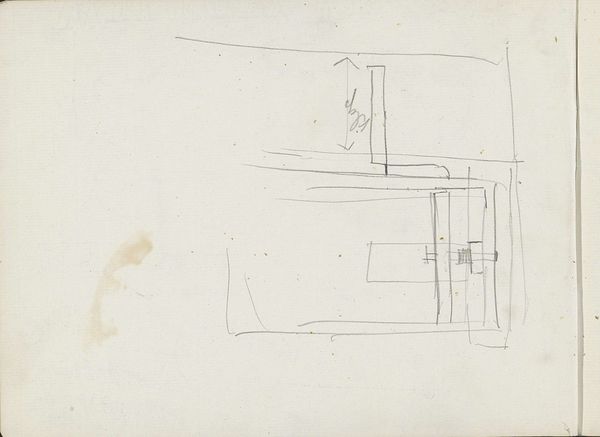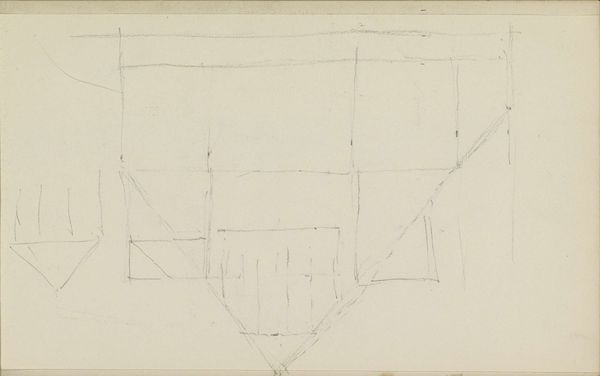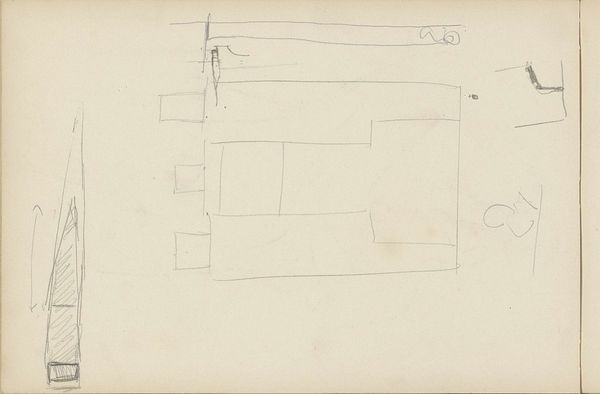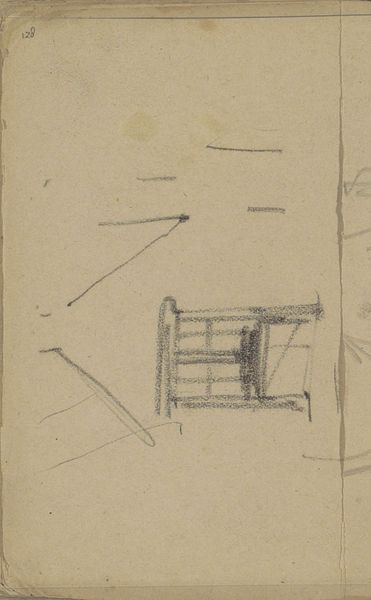
drawing, paper, pencil
#
drawing
#
art-nouveau
#
paper
#
geometric
#
pencil
#
abstraction
#
modernism
Copyright: Rijks Museum: Open Domain
Curator: Welcome. Before us is "Geometrische vormen," a pencil drawing on paper created in 1908 by Carel Adolph Lion Cachet, here in the Rijksmuseum. It showcases his engagement with emerging abstraction at the time. What strikes you initially about this piece? Editor: It's incredibly minimal, isn't it? Almost austere. Just faint lines, suggesting shapes. There's something quite tentative about the marks. You can almost feel the artist thinking through the form, grappling with it. It also strikes me as interesting how modern movements looked at this piece after. Curator: Absolutely. The work points to the simplification of form and structure characteristic of early Modernism. Cachet, primarily known for his decorative work, explores pure geometric shapes in a way that challenged the art world’s perception on his role in art, creating tension at that time in society about art versus craft. Editor: Yes, but beyond art circles, how did average people respond to this? Did they see in it a reflection of their rapidly changing urban and industrial lives, mirroring the mass-produced structures then being created, even within Cachet’s work in graphic design? Curator: Some certainly did, especially those involved in architectural or design reform movements. The simplicity resonated with their call for functionality and truth to materials. But for others, the lack of immediate representational imagery made it inaccessible, fueling the ongoing debate about the role of art in reflecting society, or challenging its conventional standards. Editor: Which is itself a material reaction! Pencil, paper – basic elements transformed into this potent dialogue. Consider the labor involved in creating such simple marks – what kind of paper was Cachet using and the type of pencil: These details show Cachet's careful production, and how different these objects could affect his practice. Curator: Precisely. "Geometrische vormen" prompts us to examine art not just as aesthetic form but as active commentary. It made some conservative art circles view Cachet’s abstraction as a commentary of the society they were in and the art Cachet produced for them. It pushes us to remember art exists within– and pushes against – societal expectations. Editor: It shows how seemingly rudimentary tools and materials give way for these wider art interpretations. I find myself appreciating its boldness even more now. Curator: Indeed. It’s a quiet rebellion sketched onto paper.
Comments
No comments
Be the first to comment and join the conversation on the ultimate creative platform.
